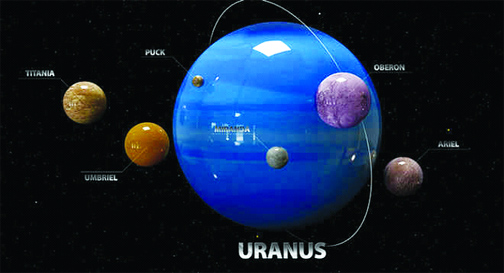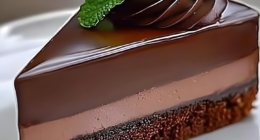One or two of Uranus’ moons may have active oceans beneath their icy surfaces and are spewing material into space, according to a study by NASA. Ariel and Miranda are suspected to have subsurface oceans as images from Voyager 2 show possible eruptions of water that froze on the surface. Researchers reanalyzed 40-year-old energetic particle and magnetic field data taken by Voyager 2 and found a trapped population of energetic particles confined near Uranus’ magnetic equator. The particles arise from Ariel and/or Miranda through either a vapor plume similar to Enceladus or through sputtering. Magnetic waves within the system would normally cause them to spread out in latitude, but these particles were all cramped near the equator between the two moons. Previously, Jupiter, Saturn, and Neptune were found as hosts to at least one icy moon that’s pumping particles into its planetary system.
According to a study by NASA, one or two of Uranus’ 27 moons, Ariel and/or Miranda, are likely to have oceans beneath their icy surfaces and are actively spewing material into the space environment. This finding is similar to Jupiter, Saturn, and Neptune, which are hosts to at least one icy moon that is pumping particles into their planetary system. The study, led by the Johns Hopkins Applied Physics Laboratory, analyzed energetic particle and magnetic field data taken by NASA’s Voyager 2 spacecraft nearly 40 years ago. The spacecraft is the only one to have gone to Uranus. The researchers found a trapped population of energetic particles that the spacecraft had observed while departing Uranus. The particles were confined near Uranus’ magnetic equator, which was surprising, as magnetic waves within the system would typically cause them to spread out in latitude. The team suspects the particles arise from Ariel and/or Miranda through either a vapour plume similar to that seen on Enceladus or through sputtering. Scientists have already suspected Uranus’ five largest moons, Ariel and Miranda included, may have subsurface oceans. Voyager 2 images of both moons show physical signs of geologic resurfacing, including possible eruptions of water that froze on the surface.
Don’t miss interesting posts on Famousbio










